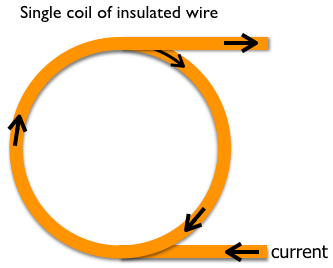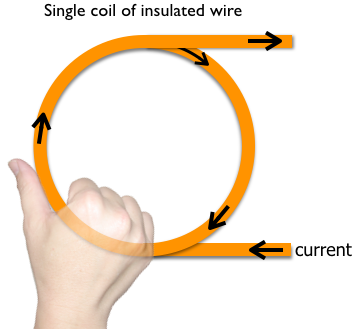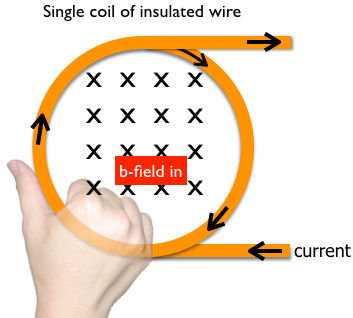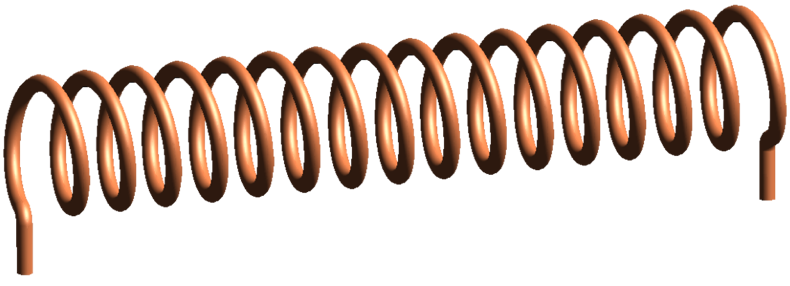If you take a single coil, or loop, of wire, the magnetic fields due to every atom on the wire will add up in the center of the coil.

The magnetic field's strength can be found from:

The b-field inside of the coil of wire is either pointing into the page or our of the page. Ampere's Law, (the closed right hand rule,) is used to determine the b-field's direction. To determine the b-fields direction, "grab the imaginary loop of wire with your right while making your your thumb points in the current's direction.

The fingers show the direction of the b-field. In this case the fingers are pointing into the screen on the INSIDE of the loop. Therefore the b-field due to the current pictured here is pointing into the screen.

A solenoid is a coil of wire made up of several single loops of wire. The wire used to make a solenoid is insulated. Here is a picture of an air core solenoid that is outstretched. (From wikipedia.)

The coil is described by a couple of properties:
- the number of coils, N, counting number,
- the length of the coil, L, measured in meters [ m ],
- the permativity of the "stuff" inside the loops of wire, μ, measured in Tesla's [ T•m2/A ],
- the current pushed through it, I, measured in amps [ A ],
- and the magnetic field it generates, B, measured in Tesla's [ T ].

Below is a picture of a iron core solenoid. It would generate a stronger b-field than the aircore solenoid because it's magnetic permeability is higher.

Iron has a magnetic permeability of 0.25 T•m2/A. Compare this to air's which is nearly the same as a vacuum's at 4π x 10-7 T•m2/A. Iron core solenoids can generate a magnetic field nearly one million times greater than an air core solenoid.
|